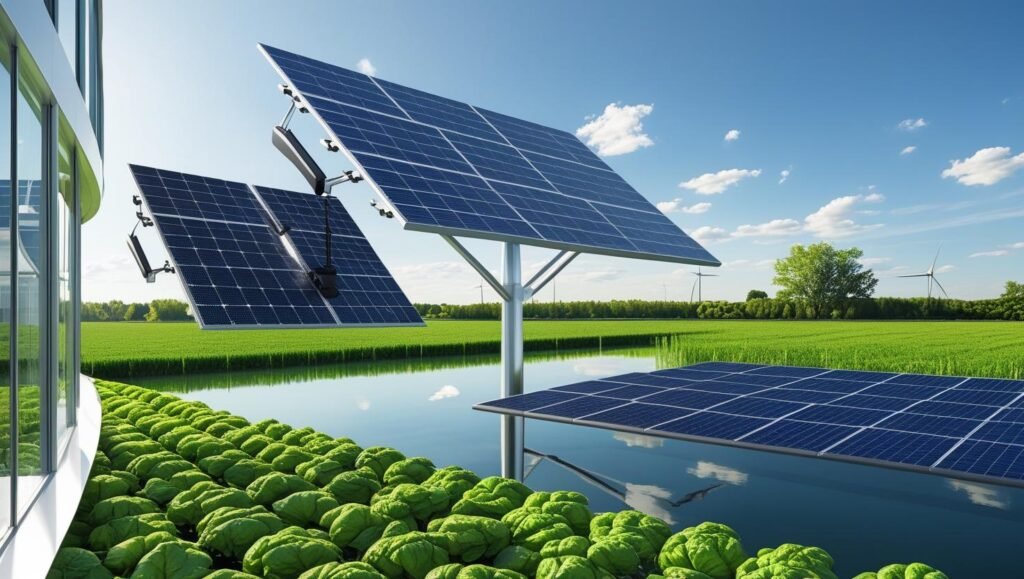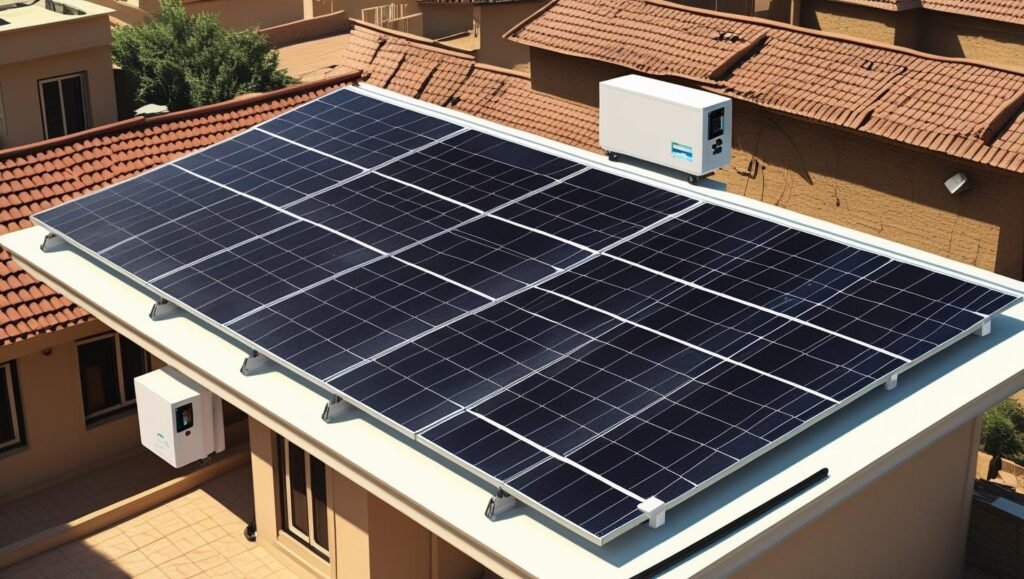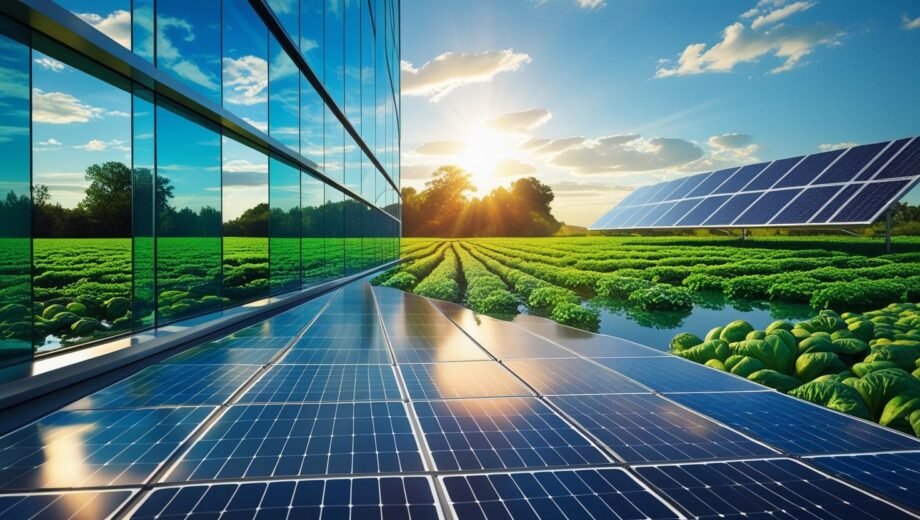The sun, an eternal furnace of clean energy, holds the key to a sustainable future. As the world grapples with climate change and the imperative to reduce reliance on fossil fuels, solar energy stands out as a beacon of hope. What was once a niche technology is now a rapidly evolving powerhouse, with advances in solar energy technology continually pushing the boundaries of efficiency, affordability, and versatility. This blog explores how solar energy is transforming the green tech landscape and what the future holds for this abundant renewable energy source, especially in sunny regions like Peshawar, Khyber Pakhtunkhwa, Pakistan.
Solar Energy Explained: Harnessing the Power of Light
At its core, solar energy works by converting sunlight into usable electricity or heat. This is primarily done through two main technologies:
- Photovoltaics (PV): PV panels, commonly seen on rooftops and in large solar farms, use semiconductor materials to directly convert sunlight into electricity (direct current, or DC). This DC electricity is then converted into alternating current (AC) by an inverter, making it suitable for homes and businesses or for feeding into the grid.
- Concentrating Solar Power (CSP): CSP systems use mirrors to concentrate sunlight onto a receiver, generating heat that drives a turbine to produce electricity. These are typically used for large-scale, utility-level power generation.
The beauty of solar energy lies in its abundance and its low environmental impact during operation. Unlike fossil fuels, it produces no greenhouse gas emissions or air pollutants while generating electricity, making it a cornerstone of clean energy initiatives globally.
Explore Solar Energy Innovations: Cutting-Edge Advancements
The pace of advances in solar energy technology is breathtaking. Here are some of the most exciting innovations shaping the industry:
- Perovskite Solar Cells: These groundbreaking cells are lightweight, flexible, and have shown immense promise in achieving higher efficiencies than traditional silicon cells, especially in low-light conditions. Their potential for lower production costs and versatile applications (like transparent solar panels or solar fabrics) makes them a significant area of research.
- Bifacial Solar Panels: Unlike conventional panels that capture sunlight only from one side, bifacial panels are designed to capture light from both the front and the back. This allows them to generate additional electricity from light reflected off surfaces like the ground, increasing overall energy yield by up to 30% Source: Truzon Solar – Latest Solar Panel Technology. These are increasingly being deployed in utility-scale projects and even in environments with high albedo like deserts, which could be beneficial for large installations in Pakistan.
- Floating Solar Farms (Floatovoltaics): Addressing land scarcity, these systems involve mounting solar panels on structures that float on bodies of water like lakes, reservoirs, or even oceans. They can increase efficiency due to the cooling effect of water and reduce evaporation from water bodies Source: Energy America – Innovations in Solar Technology.
- Building-Integrated Photovoltaics (BIPV): BIPV seamlessly integrates solar technology into building materials like roof tiles, facades, and windows. This approach transforms buildings into energy generators, offering aesthetic appeal alongside energy production. Imagine buildings in Peshawar where the windows themselves generate power!
- Advanced Energy Storage: The intermittency of solar energy (no power at night or on cloudy days) is being addressed by significant advancements in battery storage. Innovations include high-capacity lithium-ion batteries, promising solid-state batteries (offering higher energy density and safety), and cost-effective sodium-ion batteries Source: Kings Research – The 2025 Solar Battery Market. Artificial intelligence (AI) is also being used to optimize battery management, predicting demand and weather to enhance efficiency and grid integration.
- Agrivoltaics: This innovative approach combines agriculture and solar energy by growing crops underneath or between solar panels. It allows for dual land use, can reduce water consumption for crops due to shading, and offers additional income streams for farmers.

US Solar Technology and Global Trends
The US solar technology market continues to be a significant driver of global growth and innovation. While Q1 2025 saw some fluctuations, solar accounted for 69% of all new electricity-generating capacity added to the US grid, indicating its dominant role in the clean energy transition Source: SEIA – Solar Market Insight Report Q2 2025. Policy support, ongoing cost reductions, and technological advancements like TOPCon and Perovskite cells are expected to maintain strong growth.
Globally, the cost of solar technology has decreased by nearly 50% over the last decade, making it increasingly competitive. This trend is crucial for regions like Pakistan, which has abundant sunlight and a growing energy demand. According to the Pakistan Economic Survey 2024-25, the share of green energy (hydropower, wind, and solar) is expected to increase to around 59% of the country's total energy mix by 2030, with a significant increase in installed renewable energy capacity (nearly doubling in the first nine months of FY 2024-25, largely due to net metering) Source: The Nation – Pakistan's renewable energy capacity nearly doubles. This highlights the increasing relevance of purchase solar technology for both residential and commercial sectors in the region.
Investing in the Sun: Purchase Solar Technology
For homeowners, businesses, and industries in Pakistan looking to purchase solar technology, the market offers a wide range of options, from individual panels to complete system installations. Brands like SunPower solar systems are renowned globally for their high efficiency (some models reaching up to 22.8% and offering 40-year warranties), making them a premium choice for those seeking maximum energy generation from limited space Source: Soleos Solar Energy – Best 11 Solar Panel Brands- Top Brands in 2025; SunPower Solar Panels Price in Pakistan 2025. While prices can vary, the long-term savings on electricity bills and the reduction in carbon footprint make it a compelling investment.

The Path Ahead for Renewable Energy
While the advantages of solar energy are clear – it's a clean, renewable, and increasingly affordable source of power – challenges remain. These include intermittency (solved by storage), the need for efficient grid integration, and responsible recycling of panels and batteries at the end of their lifespan. However, continuous advances in solar energy technology, coupled with supportive policies and increasing public awareness, are steadily overcoming these hurdles.
The future of solar energy is bright. It represents not just a technological advancement but a fundamental shift towards a decentralized, resilient, and environmentally sound energy system. By embracing these green tech innovations, we can harness the sun's power to illuminate homes, businesses, and communities, driving us towards a truly sustainable future.
Want to Explore More?
Read our latest piece: Green Technologies of the Future: Which Developments Will Save the World?.
Comment below: What’s your take on the environmental cost of green tech?
Tag us on social media using #GreenTechRealityCheck
nature.com+7thenevadaindependent.com+7lithiumharvest.com+7
Have questions or thoughts? Comment below and let us know what more you’d like to learn about green technology—we’d love to hear from you!







